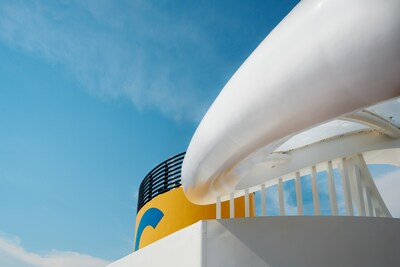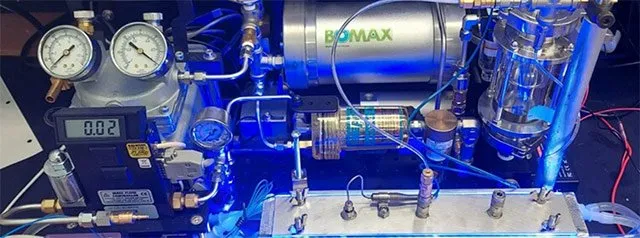Germany has commenced construction on the first land-based terminal for liquefied gases, which is set to go into operation in 2027 and will eventually handle ammonia imports, according to a news release.
More than 1,100 people will be working on the Hanseatic Energy Hub in Stade so that the two largest LNG tanks in Europe – each of which will be ammonia-ready and have a capacity of 240,000 cubic metres – can be connected to the grid in three years’ time. Around 200 partners and backers attended the kick-off of the future project today at a joint ground-breaking ceremony on the site of the future terminal in Stade.
Stefan Weil, the Minister President of Lower Saxony, said: “Following the first floating LNG terminal, Germany’s first land-based liquefied natural gas terminal is now also being built in Lower Saxony. My sincere thanks go out to all involved. Our federal state is playing a key role in the expansion of infrastructure to import energy. It is also at the centre of the planned Germany-wide hydrogen core network, which will link all the main production sites, storage locations and industrial consumers. In conjunction with the further expansion of wind energy, we are strongly pursuing the goal of a green hydrogen economy and strengthening Lower Saxony’s position as Germany’s energy hub.”
Besides the two German energy suppliers EnBW and SEFE, which have respectively booked annual capacities of 6 and 4 billion cubic metres at the terminal, also the Czech energy company ČEZ has secured long-term import rights for 2 billion cubic metres per year. All customers have the option to switch their contracts to hydrogen-based energy sources, such as ammonia, as part of the energy transition in their home countries.
Jozef Síkela, the Czech Minister of Industry and Trade, underlined the European dimension of the project, saying: “We are constantly working to ensure the best possible future for our energy industry in the Czech Republic. Capacities for importing liquefied natural gas from overseas are also an essential part of all this. After securing capacity in the floating LNG terminal in the Netherlands, we also managed last autumn in cooperation with ČEZ to secure capacity in the first German land-based terminal, Stade. In three years it will contribute to covering up to a third of today’s Czech consumption. Thanks to the convenient location, the terminal can alco contribute to the reduction of fees for transporting gas to the Czech Republic.”
Jan Themlitz, CEO of the Hanseatic Energy Hub, emphasised: “After six years of planning and permitting, the construction phase now begins. We are proud that Germany’s first land-based terminal is taking shape in Stade – this being not only a major German but also a major European project. Privately initiated and funded we are benefiting from the vast experience of our shareholders. Partners Group is one of the largest private investors in the infrastructure sector. And Enagás, Europe’s leading LNG-terminal operator, will be assuming operational responsibility and is teaming up with Dow, the ideal industrial partner on the site in Stade. As an initiator, the Buss Group has played a key role in driving the project forward and bringing the shareholder-team together.”
Técnicas Reunidas – the global specialist for planning, procurement and construction – and its partners FCC and Enka will be responsible for the construction. To make the central Hanseatic Energy Hub a reality by 2027,
- workers will have to drive around 4,600 piles into the ground. The foundation is already statically designed to allow a subsequent conversion to ammonia. In addition, for the terminal
- more than 60 thousand cubic metres of concrete will be poured, the equivalent of around 20 Olympic swimming pools
- almost 11,000 tonnes of structural steelwork will be erected, weighing 1.5 times as much as the Eiffel Tower





